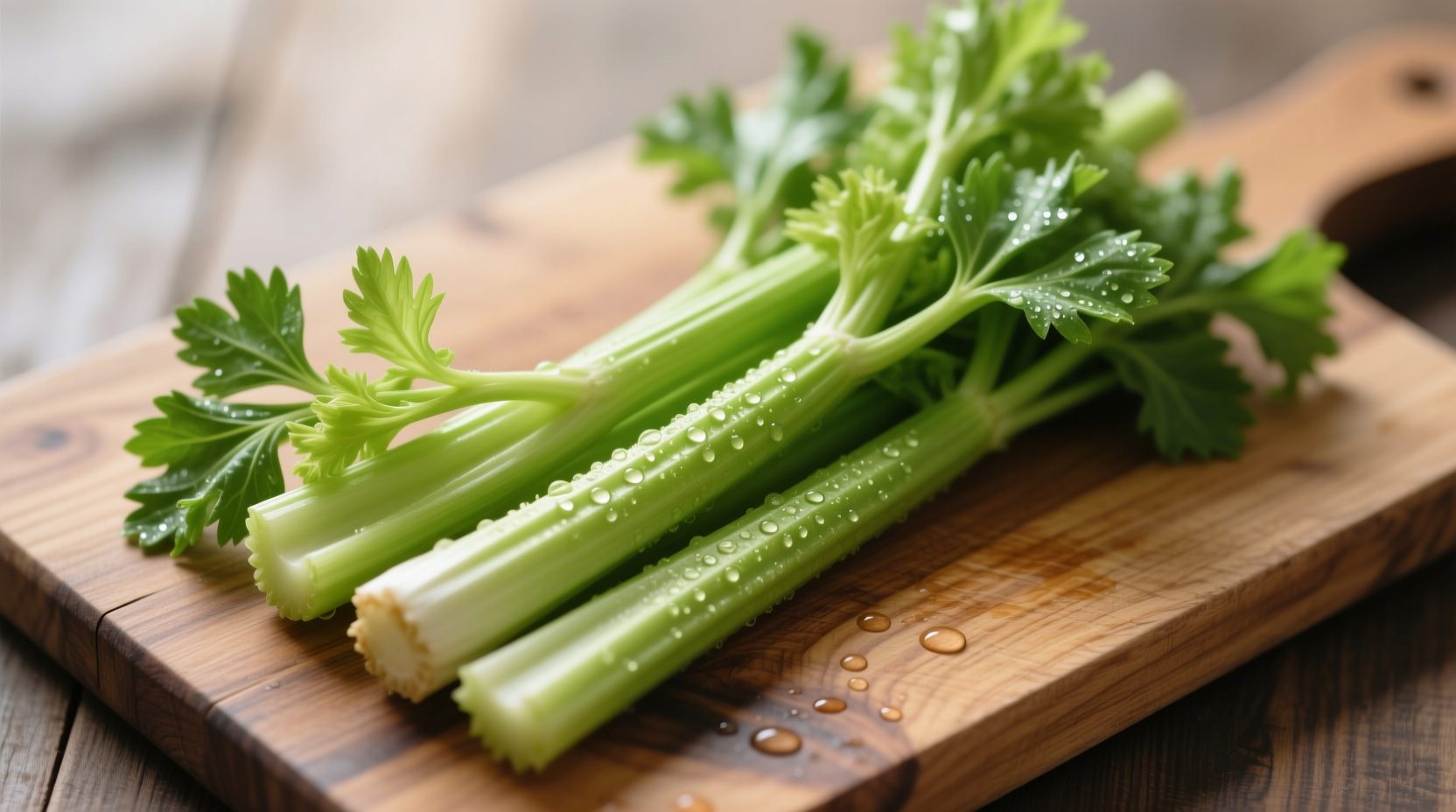Understanding Celery's Fiber Profile
When evaluating celery nutrition fiber content, precise measurements matter. According to the USDA FoodData Central database, raw celery delivers:
| Serving Size | Total Fiber | Soluble Fiber | Insoluble Fiber |
|---|---|---|---|
| 1 medium stalk (40g) | 0.6g | 0.2g | 0.4g |
| 1 cup chopped (100g) | 1.6g | 0.5g | 1.1g |
| 2 cups (200g) | 3.2g | 1.0g | 2.2g |
While celery isn't the highest fiber vegetable available, its combination of soluble and insoluble fiber creates unique digestive benefits. The celery fiber content per 100g (1.6g) may seem modest compared to other vegetables, but its high water content (95%) makes it an excellent low-calorie vehicle for fiber intake.
Why Celery Fiber Matters for Your Health
Research published in the American Journal of Clinical Nutrition confirms that dietary fiber from whole foods like celery contributes to multiple health benefits. The health benefits of celery fiber include:
- Digestive regulation - Insoluble fiber adds bulk to stool and prevents constipation
- Blood sugar management - Soluble fiber slows glucose absorption
- Cholesterol reduction - Binds to bile acids in the digestive tract
- Gut microbiome support - Feeds beneficial bacteria in the colon
National Institutes of Health studies indicate that adults consuming adequate fiber have 15-30% lower risk of developing cardiovascular disease. While celery alone won't meet your daily fiber needs, it serves as an excellent component of a high-fiber diet pattern.
Celery vs. Other High-Fiber Vegetables: Context Matters
Understanding where celery stands among vegetables helps set realistic expectations for daily fiber intake from celery. The following comparison shows fiber content per 100g:
| Vegetable | Total Fiber (per 100g) | Calories | Best For |
|---|---|---|---|
| Celery | 1.6g | 16 | Low-calorie hydration with fiber |
| Broccoli | 2.6g | 34 | Balanced soluble/insoluble fiber |
| Carrots | 2.8g | 41 | Beta-carotene plus fiber |
| Brussels Sprouts | 3.8g | 43 | Maximum fiber density |
This celery vs cucumber fiber content comparison reveals important context: while celery provides slightly more fiber than cucumber (0.5g per 100g), both serve as hydrating, low-fiber vegetables. Celery's advantage lies in its unique combination of fiber types and phytonutrients like apigenin that enhance digestive benefits.
Maximizing Fiber Benefits from Celery
To get the most from celery nutrition fiber, consider these evidence-based strategies:
- Eat it raw - Cooking reduces fiber content slightly; raw celery preserves maximum fiber
- Include the leaves - Often discarded, celery leaves contain higher fiber concentrations
- Pair with healthy fats - Add avocado or olive oil to enhance absorption of fat-soluble nutrients
- Combine with higher-fiber foods - Create vegetable sticks with hummus for balanced fiber intake

The Academy of Nutrition and Dietetics recommends consuming vegetables in their whole form rather than juiced to preserve fiber content. When preparing celery for snacks or salads, minimal processing maintains the structural integrity of the fiber.
Practical Daily Incorporation Strategies
Reaching the recommended 25-38 grams of daily fiber requires strategic planning. Here's how to effectively include celery in your routine:
- Morning boost - Add chopped celery to smoothies (leaves included for extra fiber)
- Lunch enhancement - Include celery in tuna or chicken salad instead of mayo-heavy versions
- Snack smart - Pair celery sticks with almond butter for protein-fiber synergy
- Dinner integration - Sauté celery with onions and carrots as a flavor base for soups
Registered dietitians note that spreading fiber intake throughout the day prevents digestive discomfort. The is celery high in fiber question depends on perspective - while not the highest source, its low-calorie nature makes it possible to consume larger quantities without exceeding calorie goals.
Setting Realistic Expectations
Understanding the limitations of celery as a fiber source prevents nutritional disappointment. One stalk provides just 2% of the daily recommended fiber intake. For meaningful impact:
- Combine celery with other high-fiber vegetables like broccoli and Brussels sprouts
- Include whole grains and legumes for complete fiber profile
- Gradually increase total fiber intake to allow digestive system adaptation
- Drink adequate water (at least 8 glasses daily) to support fiber function
The Dietary Guidelines for Americans emphasize variety in fiber sources. While celery contributes valuable hydration and modest fiber, relying solely on celery for fiber needs would require consuming impractical quantities (approximately 15-20 stalks daily to reach minimum recommendations).
Addressing Common Misconceptions
Several myths surround celery and fiber. Let's clarify with evidence:
- Myth: Celery has negative calories
Fact: While very low calorie (16 per 100g), the thermic effect doesn't exceed its caloric content - Myth: All celery fiber is the same regardless of preparation
Fact: Raw celery maintains more fiber structure than cooked versions - Myth: Celery alone can solve constipation issues
Fact: Effective relief requires multiple fiber sources plus adequate hydration
Research from the National Center for Biotechnology Information confirms that diverse fiber sources work synergistically for optimal digestive health, making celery one valuable component of a comprehensive approach.
Final Thoughts on Celery Nutrition
Celery's fiber content, while modest compared to some vegetables, offers unique advantages through its combination of soluble and insoluble fiber in an extremely low-calorie package. When incorporated as part of a varied plant-based diet, celery contributes meaningfully to digestive health and overall wellness. Understanding the realistic celery fiber content per stalk helps set appropriate expectations while appreciating its role in a balanced nutritional approach.











 浙公网安备
33010002000092号
浙公网安备
33010002000092号 浙B2-20120091-4
浙B2-20120091-4